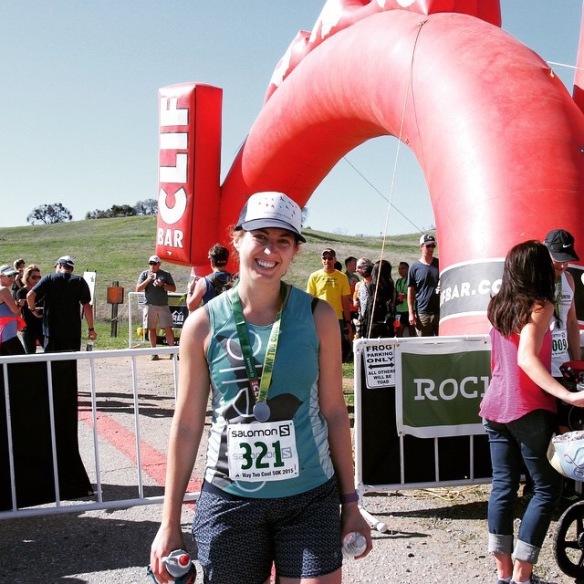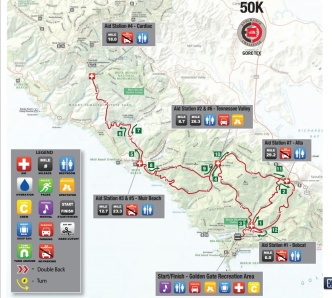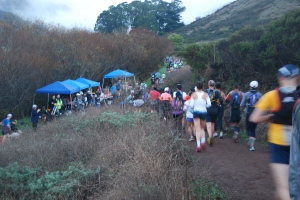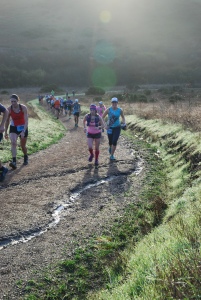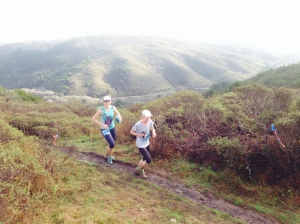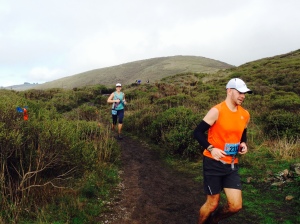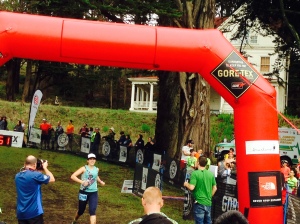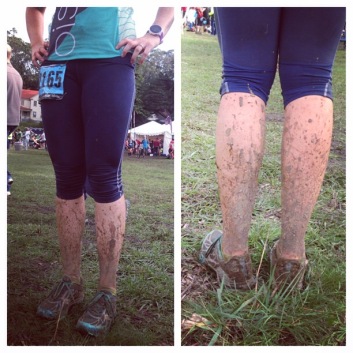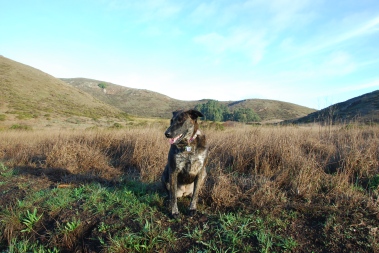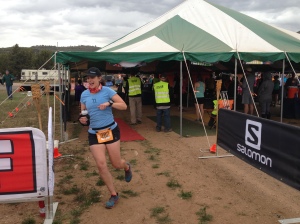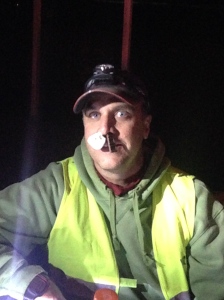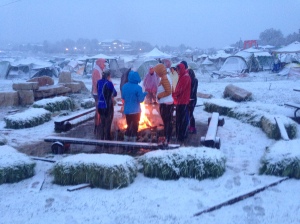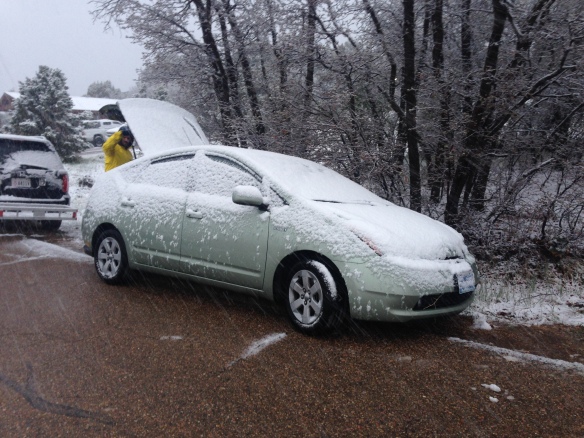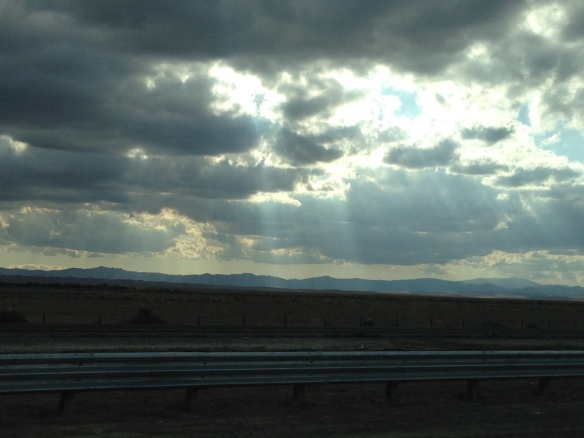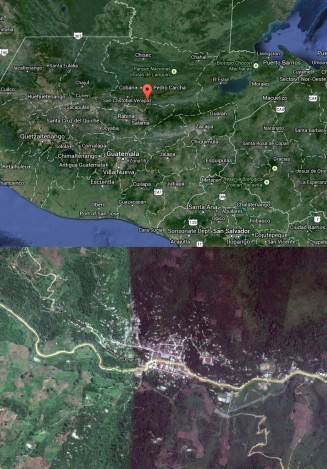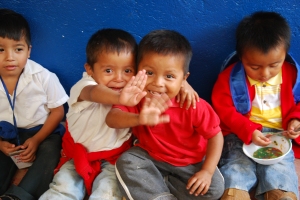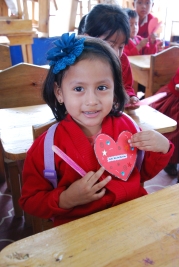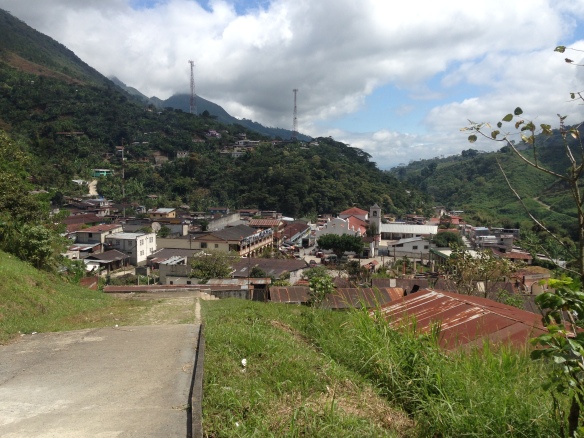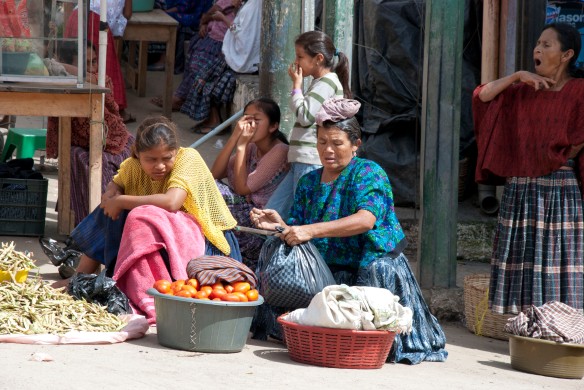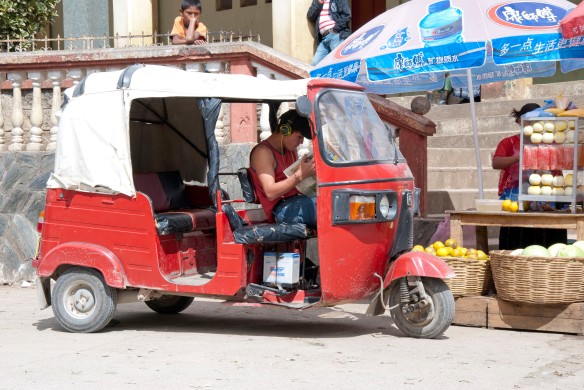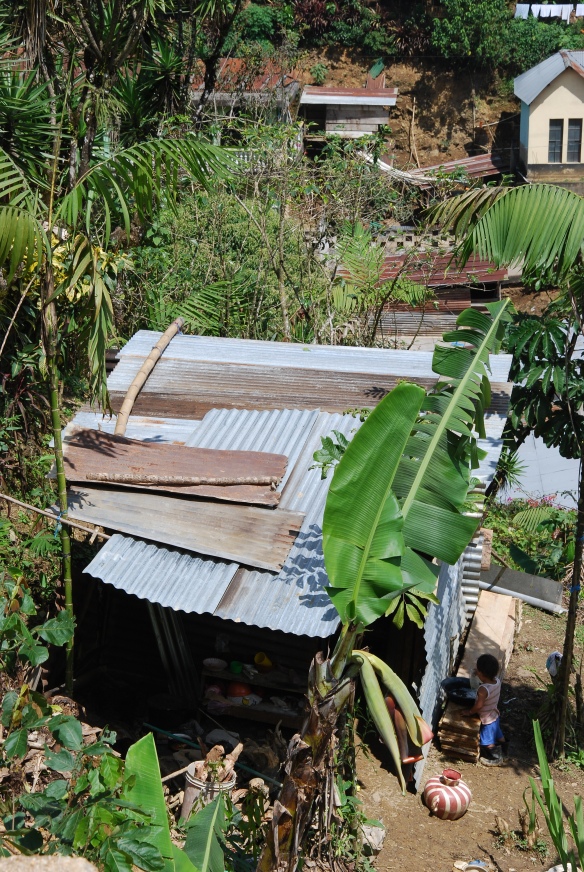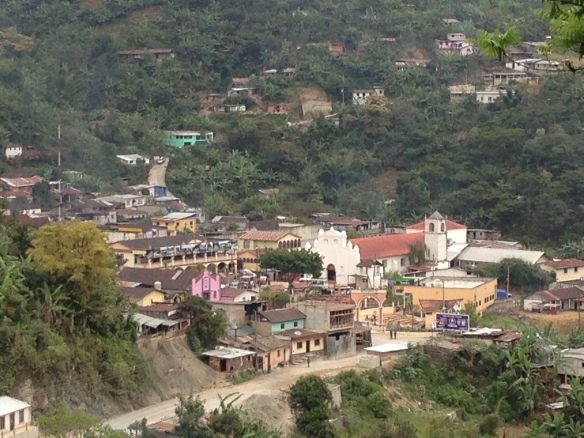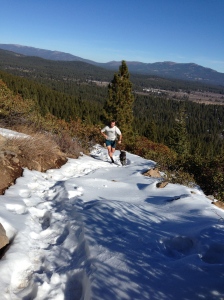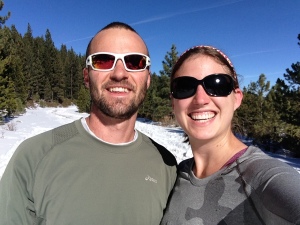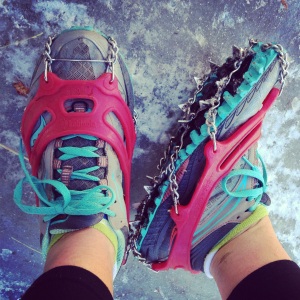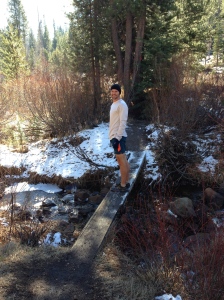Its taken me a few days to reflect on this my Way Too Cool 50k race and pull together my thoughts for a blog post. This was my 5th 50k, and it was the first race that I have gotten into the lottery for (I have terrible lottery luck). The lottery opened right after my huge PR at North Face Endurance Challenge SF 50k in December, so I quickly signed up for the lottery, hoping I would get to check this race off my bucket list.

course elevation
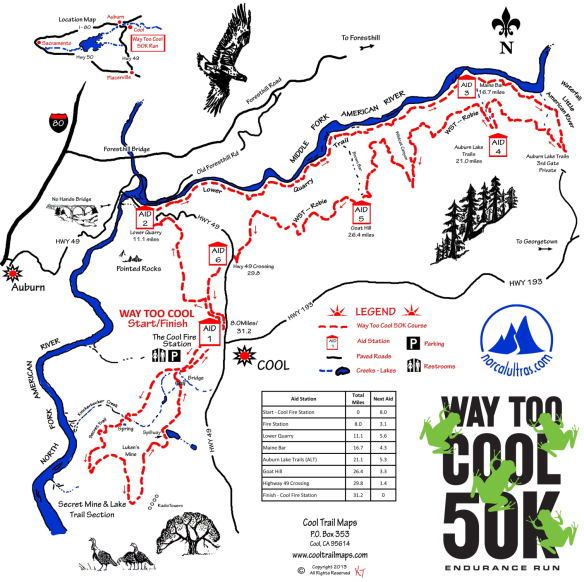
I hadn’t quite processed how early in the year the race was, or how much recovery I would take in December.
My training for this race was a bit haphazard. My weekday runs weren’t happening as often, I joined a gym and added in strength training, which I think has helped immensely, and my weekend miles were a bit faster than normal. Three weeks before WTC I was supposed to run the Lake Chabot 30k as a training race, but I caught a terrible chest cold, and instead raced the half marathon, hacking up a storm the whole time, but still coming in as the third woman overall, setting a new trail half PR. When I got to the start line of WTC, I felt fit, but I wasn’t quite sure about the long miles on trails I had never seen.
The course of WTC is fairly simple, an 8mi loop from with rolling hills, returning to the start to then go on a 22ish mi loop down to the American River. Overall there is about 4800ft of elevation gain, most of which occurs in the latter half of the race. From reading other people’s blog posts, I knew the 8mi loop would be speedy, although potentially congested with the single track, then the start of the 22mi loop was downhill to the river, rolling along the river, and then uphill back to the finish. Since I knew the majority of the climbing was in the second half of the race, my plan was to race the first half of rolling hills and downhill slightly faster than I normally would, but at a comfortable pace, before being forced to slow down for the climbs at the end. I thought it was a good strategy that would either push me to another PR, or make me crash and burn from pushing too hard too early. I’ll let you be the judge of how that played out.

crowd waiting to start
The night before the race we stayed in the newly remodeled, dog-friendly Motel 6 in Auburn. I was super impressed with it considering it was only $65 a night. The bed was comfy, our dog could join, and it had a huge tv and wood floors. The race started at the reasonable hour of 8am, which meant no 5am alarm since we were only 15 minutes from the start line. I was assigned to heat 2 (people estimated to finish over 5:30), which starts 10 minutes after heat 1 (there are only two heats). I purposely moved to the front of the start heat, since I knew there was a flat 1 mi road section to start, then a quick decent to the first river crossing. I had read in other posts that there can be heavy congestion here since there is only a tiny log bridge for people who don’t want to get their feet wet, and I did not want to be caught in congestion or get my feet wet so early in the race.
When the gun went off, I started at what I thought was reasonable speed, felt comfortable, there were people in front of me so I knew it wasn’t too fast, but when my watch beeped for the first mile and it read 7:50, I knew it was too fast. Oops. Before I knew it I was tagging along with two guys in a great rhythm, dashing across the first river without hesitation or dodging people. The single track was perfect: smooth, beautifully rolling through alternating forest and meadows, a perfect start. Around mile 5 we started catching people at the end of heat 1. I was in such a solid rhythm that I passed a number of congo lines of people walking, probably using more energy than I should have, but I really didn’t want to walk such runable terrain so early in the race. I choked down my first Gu at mile 6, always hard to do early in the race, but I knew my body would thank me later. I finishe the 8 mi loop around a 9:20 average per mile, quite speedy for me on trails, but I was smiling, having a great time, and feeling like I still had plenty of energy in the tank. I saw Charlie and Camus, my support squad at the start, got a quick kiss and dashed away for the nice 3miles of downhill to the river.
This section was pretty uneventful, it was a a nice grade of downhill, I got passed by a few guys barreling down, but before I knew it the downhill was over, we were crossing highway 193, and heading down to follow the rive.
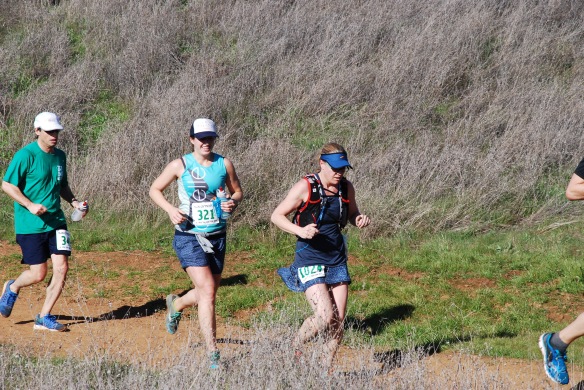
mile 8
At Aid station 2 (mile 11ish) I took a few salty potatoes, refilled my hand held, and headed down the Quarry Trail, a wide, gravel trail that I would get to know quite well over the next 5.5 miles. Quarry Trail was quite rolling, with a few steep climbs that brought me to a walk. I had counted on this section being fairly runable, but saw my average split on my Garmin creeping. Still, being 2 min/mi average faster than my PR time, I figured I was in a good place even if I had to walk the last 10 miles of uphill. On this section I made a few friends with people who had the same race strategy as me. We chatted about running and other races they had planned for the year. It is always inspiring to be mid-race and hear about how this race is a launching point for their next 50 miler or 100 miler (and I thought I was crazy with this being my 5th 50k!).
When we hit Aid station 3 at mile 17, I knew it was only a matter of time before the uphill pain cave started. Up until this point I had been super on top of my hydration, and Gu/food consumption, making sure I had the fuel and energy for the next 14 miles. The uphill started soon after the aid station, alternating between uphill and gradual but runable uphill, not what I was expecting based on previous posts. Based on the elevation chart, I had expected pretty continuous uphill after mile 17, but really the uphill started closer to 18, but then was relentless.
As we were climbing, all of a sudden, there were Charlie and Camus again!

Starting the climb with a surprise cheering section on!!
They hiked in a few miles to cheer, take pictures, and sit in the sun. Seeing them was a very welcome sight that kept me energized for quite a few miles!
Throughout the climb, I had been downing my water, knowing their was an aid station at mile 21. Well, mile 21 came and went on my Garmin without and aid station, me without water, and temperatures rising. Fortunately, the Aid station came around mile 22.2, but another runner, seeing me walking on some mostly flat section of trail with an empty bottle, had offered me some of their water to tide me over. I love how friendly trail runners are. She insisted I let her pour some water into my bottle, which in hindsight I was very thankful for because I was thirsty. I was still feeling pretty good at the aid station, but around mile 25 was where my wheels were starting to come off. The uphill kept coming. Mostly runable, which I think was the bad part for me. In Marin, I train on big climbs, where I can alternate running and walking. This race had a lot of runable terrain, which was not what I had trained for. Actually running (opposed to mixing in walking) most of the previous 25 miles had taken a toll on my body that I wasn’t used to at this point in a race, I was used to a bit more walking. My hips started hurting, my IT bands were very tights from the running. In hindsight, I would have trained for this race a bit more similarly to a road marathon, lots of long, mostly flat miles so my body would be more used to the wear of continuous running. I was also used to uphill first, downhill second, but since this race was in canyon lands, it was downhill first, uphill second, some thing I also hadn’t trained for.
As I climbed Goat Hill to the mile 26.5 aid station, I was SO grateful to be hiking. The change in muscle use in my legs did wonders for me. I grabbed some salty potatoes and part of a pb&j at this aid station, my spirits renewed by the tough climb up the hill. By now though, my pace had severely dropped, I was hovering around a 10:50/mi average, but still well below my PR average of 11:28. After Goat hill was some downhill, again a nice break from the slightly uphill running since gravity was in my favor, but i still had to stop and stretch my IT bands, which were unbelievable tight, unusual for me during trail runs.
Alas the downhill was short lived at only 1.5 miles, and then we started climbing again. I surprised myself with how much of the miles between Goat Hill and the finish I race considering how I was feeling.
Did I go out to hard from the beginning? I kept asking myself this question, and kept answering that I always run how I feel, and no matter what, the second half was going to slow me down. Had I run slightly slower to start, would I have been able to run slightly faster at the end? Maybe, but either way the last few miles of a 31 mile race aren’t as fast as the first few (at least for me) especially if those miles are uphill.
We crossed back over 193 with 1.5 miles to go, it was an uphill climb to the crossing and I knew there was more uphill between me and the finish. Relentless Forward Progress was the name of the game. No matter what, keep moving, run when you can, walk when you need to.

I finally crested the uphill, and could see the finish line a quarter mile away, yes it was uphill until the last quarter miles. I was in the pain cave, I’m pretty sure you could see it on my face, despite my smile that I was in fact finishing my 5th 50k, AND setting a new PR. I crossed the finish line in 5:42, 14 minutes faster than North Face, and exactly 2 hours slower than my road marathon PR. I was all smiles at the finish, instantly putting aside the pain of those last 10 miles, but in awe of the things my body can do. I got a frog cupcake, as promised by the race director, and we headed to Auburn Brewing Co for a celebratory lunch and beer.
Overall, I am excited that I PR’d, but I also know that had I trained better (part of this was not knowing anything about the course other than what I found on-line) I could have run a lot faster. So to some extent I am slightly disappointed, but I am also thrilled that I did PR, and finished my 5th 50k. I am already plotting my strategy for next year, reliving the trails over and over in my head.
The beauty of trail running is that I can come back to this race next year and based the weather and my training, have a completely different race experience. I don’t have any more big races on my calendar yet, but I am scheming about a doing either Skyline to the Sea 50k or North Face again. We will just have to see what the summer holds!
